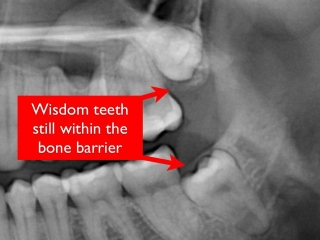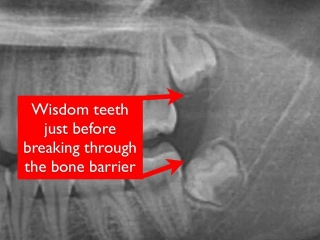 In most people, there is inadequate space between the second molars and the end of the jaw bone, leading to impaction of the wisdom teeth during their development. Complications associated with impacted wisdom teeth are well documented supporting medical studies for early removal. A common question patients ask is, “how long can I wait before I extract my wisdom teeth?”
In most people, there is inadequate space between the second molars and the end of the jaw bone, leading to impaction of the wisdom teeth during their development. Complications associated with impacted wisdom teeth are well documented supporting medical studies for early removal. A common question patients ask is, “how long can I wait before I extract my wisdom teeth?”
The extraction of wisdom teeth is safe once the roots have partially formed. Also, when the tooth has erupted close to the surface. This is quite common in those between the ages of 15-17 which is the most appropriate time for removal of wisdom teeth. Developing wisdom teeth are initially surrounded completely by bone that keeps the area sterile and free of infection. However, as soon as the wisdom teeth break through the bone, a micro-gap develops under the overlying gum tissue that often harbors oral plaque and bacteria. The overlying gum tissue makes wisdom teeth inaccessible for effective removal of such bacteria. When this happens this leads to inflammation (pericoronitis) or infection.
Once wisdom teeth break through the bone barrier, it is impossible to predict when inflammation or infection can start. Therefore, the best time to remove wisdom teeth is either right before or at the time when they break through this bone barrier and while they are free of inflammation or infection. If the teeth have already erupted beyond the bone or gum tissue level, then they should be removed as soon as possible to prevent potential complications. The worst time to extract teeth is when infection or inflammation has already occurred. This can also lead to a higher likelihood of healing complications or postoperative infection.
So, if you are waiting for your next spring or winter break to remove your wisdom teeth and they have broken through the bone barrier, there is no crystal ball to predict when infection may happen. It’s best to remove them as soon as possible! And if you can’t, then simply try to keep them as clean as much as you can to minimize chances of infection.


